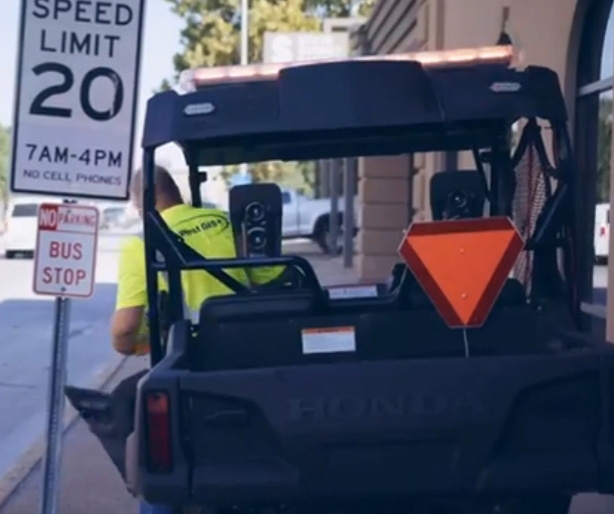 For almost 13 years now Mid-West GIS has been creating Traffic Sign Inventories for cities and counties all over the country. In these years we have been asked countless times about the use of a reflectometer, and if we recommend using that maintenance method. To be honest, in thirteen years we have not had one client that even owned one. The cost of the reflectometer itself can run $12,000-$15,000 and many of our clients simply cannot justify or afford this piece of equipment. The other aspect of the cost of this way of maintenance is the labor. Using a reflectometer is labor intensive. It requires multiple readings on each sign and those readings have to be documented in the database in order to be useful for identifying signs that’s fail. Once again, the cost just doesn’t work when there are other more cost effective alternatives.
For almost 13 years now Mid-West GIS has been creating Traffic Sign Inventories for cities and counties all over the country. In these years we have been asked countless times about the use of a reflectometer, and if we recommend using that maintenance method. To be honest, in thirteen years we have not had one client that even owned one. The cost of the reflectometer itself can run $12,000-$15,000 and many of our clients simply cannot justify or afford this piece of equipment. The other aspect of the cost of this way of maintenance is the labor. Using a reflectometer is labor intensive. It requires multiple readings on each sign and those readings have to be documented in the database in order to be useful for identifying signs that’s fail. Once again, the cost just doesn’t work when there are other more cost effective alternatives.
One of those cost effective alternatives, and the one Mid-West GIS recommends using is the sign life program. This allows the client to use the manufactured date and the manufacturer’s warranty to calculate when the sign should be replaced. For example, a stop sign is manufactured in 2019 and installed in December of 2019. This sign has a 10 year warranty. Therefore we know that this sign should be replaced in 2029. How we handle that in the Traffic Sign Inventory is to add four fields in the database. They are: Manufactured Date, Install Date, Warranty Years, Replacement Date. It is very simple to populate these four fields when a new sign is placed in the field, it only takes a minute or so and is incorporated into the work order to replace or add a new sign.
We understand when we create a new Traffic Sign Inventory the existing signs do not have this information for the most part. So Mid-West GIS uses a Sign Condition Rating to document the existing sign condition rated by Good, Fair, Poor, Bad. Signs with a bad rating need replaced immediately, poor need to be replaced in the next 1-3 years, fair need replaced in the next 4-6 years, and good signs still have 7+ years of life remaining. We setup the database so the client can populate the four new fields as these signs are replaced, and this is done for every new sign. This process gives the client an up to date and accurate Traffic Sign Inventory, as well as moving them into the new Sign Life maintenance program.
